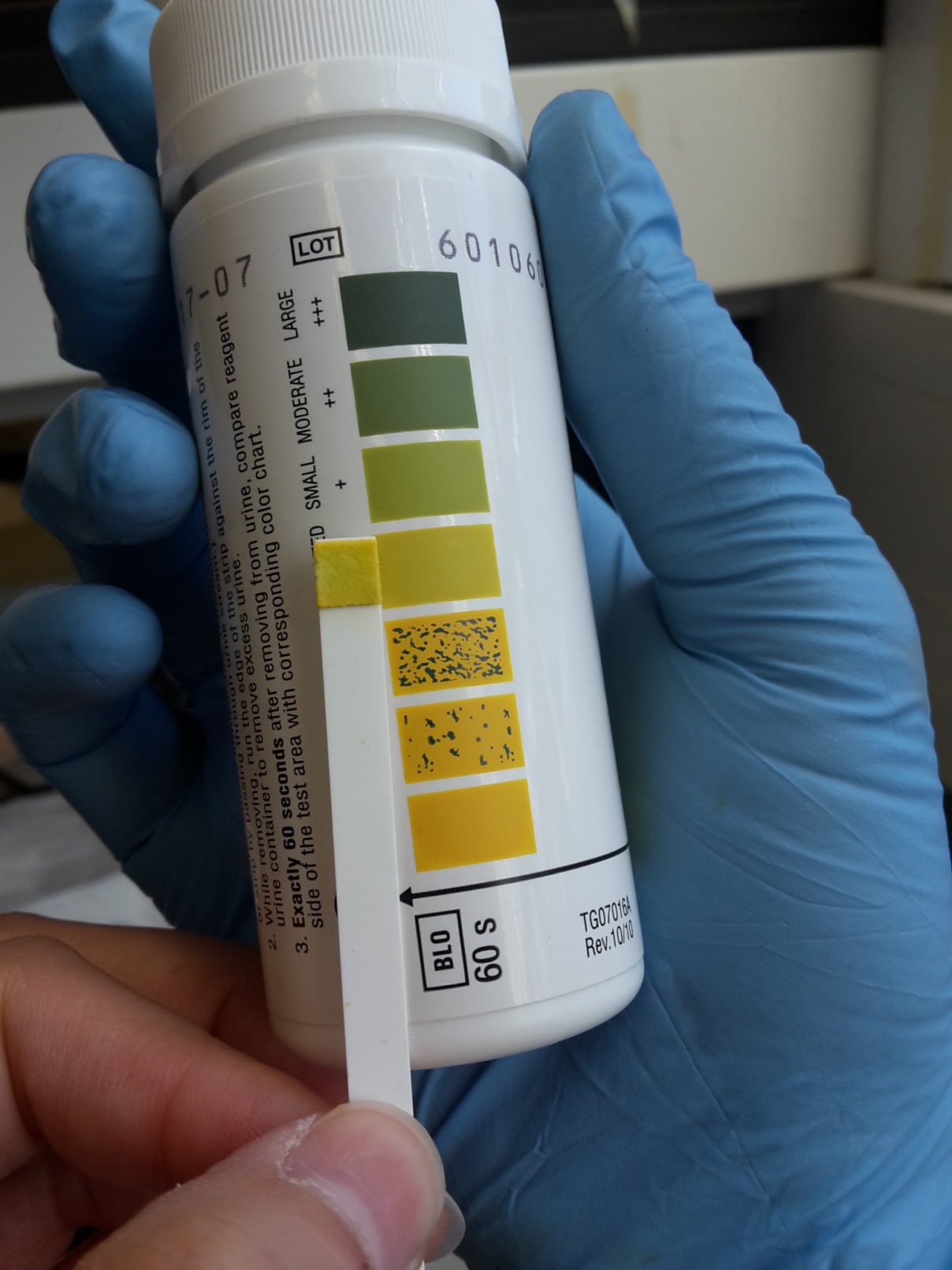Blood will have blood
The students had a bit of an interesting time yesterday testing a couple of the objects for traces of blood. Blood on objects can bring up a number of ethical issues with regards to the treatment and handling of them and it can also completely change what we think we know about the object’s themselves. Through research and visual investigation Chelsea and Jess believed their objects could potentially contain traces of blood and it was important to confirm or deny this as it would affect the remaining treatments undertaken and could assist in understanding how the object’s were used in their working lives.
We purchased a box of ‘Hemastix’, which are used for detecting blood in urine but have been known to be used for testing for blood in pigment on paintings. We then acquired a control sample of blood to make sure the Hemastix worked on blood that isn’t in urine. The video below shows the results of that control sample.
For anyone who couldn’t quite make it out, the green result indicates that blood is present in the sample. This was quite a relief as it meant the person who ‘donated’ the blood sample was indeed human…We also tested saliva and sweat, to see how they would react since some tested samples, (which likely contained salive) have been known to provide false positives. Neither the saliva or the sweat produced a reaction.
Chelsea then tested the sample from her object, which can be seen in the following video and again we got a fairly strong green result from the sample. Chelsea went on to test a number of samples from her same object in order to confirm the positive result.

Finally Jess tested the sample from her object, which was a little tricky, since the sample had quite possibly dried and degraded over the years. There appeared to be very little colour change to begin with, however it’s important to check the test strip aftert 60 seconds as that’s when it’s most likely to prodce a result. When we examined the strip after about a minute we saw that there had been a small amount of colour change. It’s possible that blood may have been present on the object, however it’s also possible that it could have been a false positive. Jess also completed the analsis several times in order to confirm of deny the presence of blood and the strips showed varying amounts of change. At this point in time we’re not able to conclusively confirm or deny the presence of blood on Jess’ object, it’s kind of like Schrödingers object!
As we’ve seen, it can be difficult with a test like this to definitively say whether blood is or isn’t present. We can see from the results of the analysis that blood appears to be present on Chelsea’s object since it produced an almost identical result to the control sample. Jess’ object on the other hand has proved to be tricky and although it is possible that blood was present, it’s also possible that the result she received may have been a false positive.
